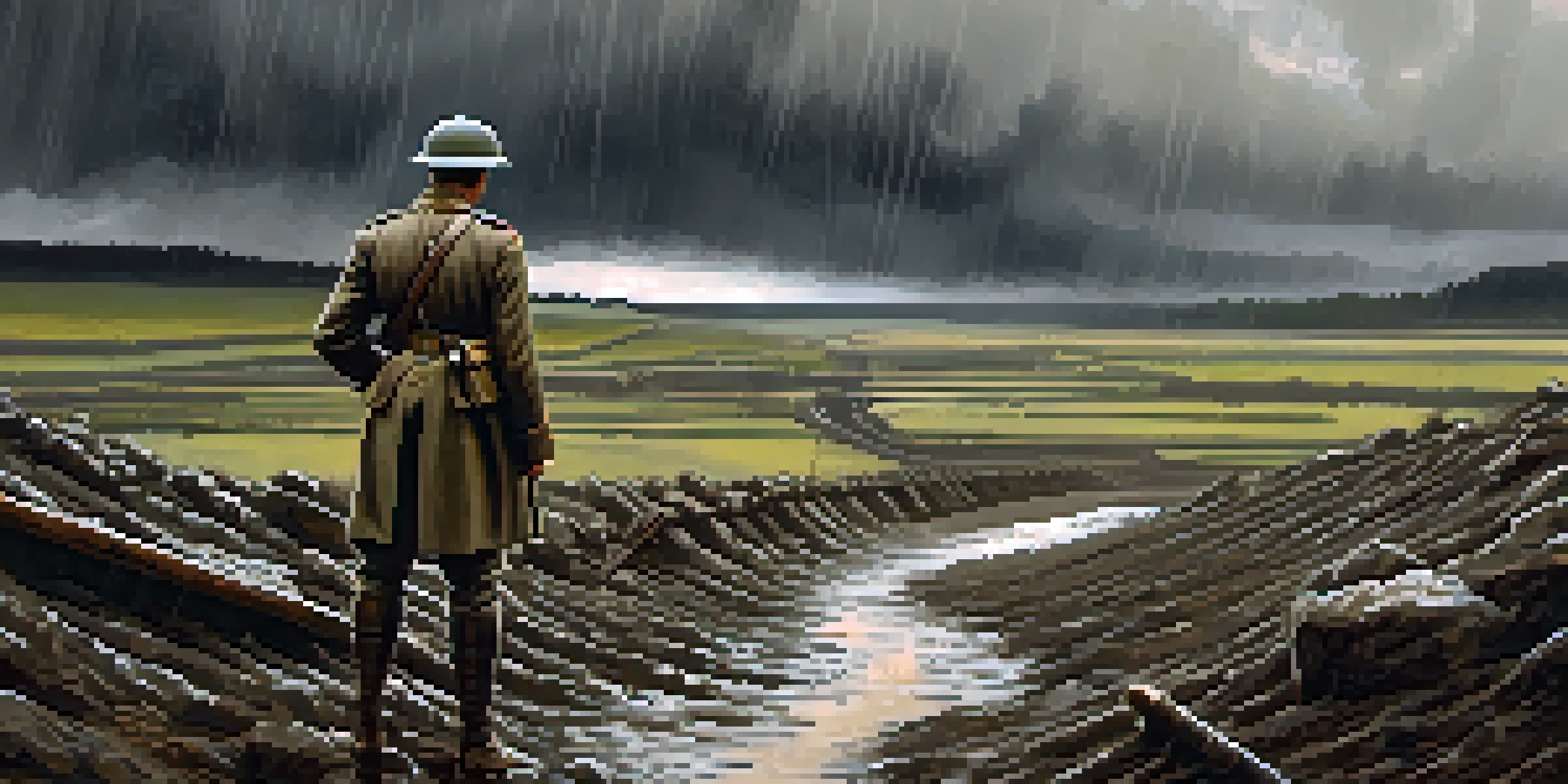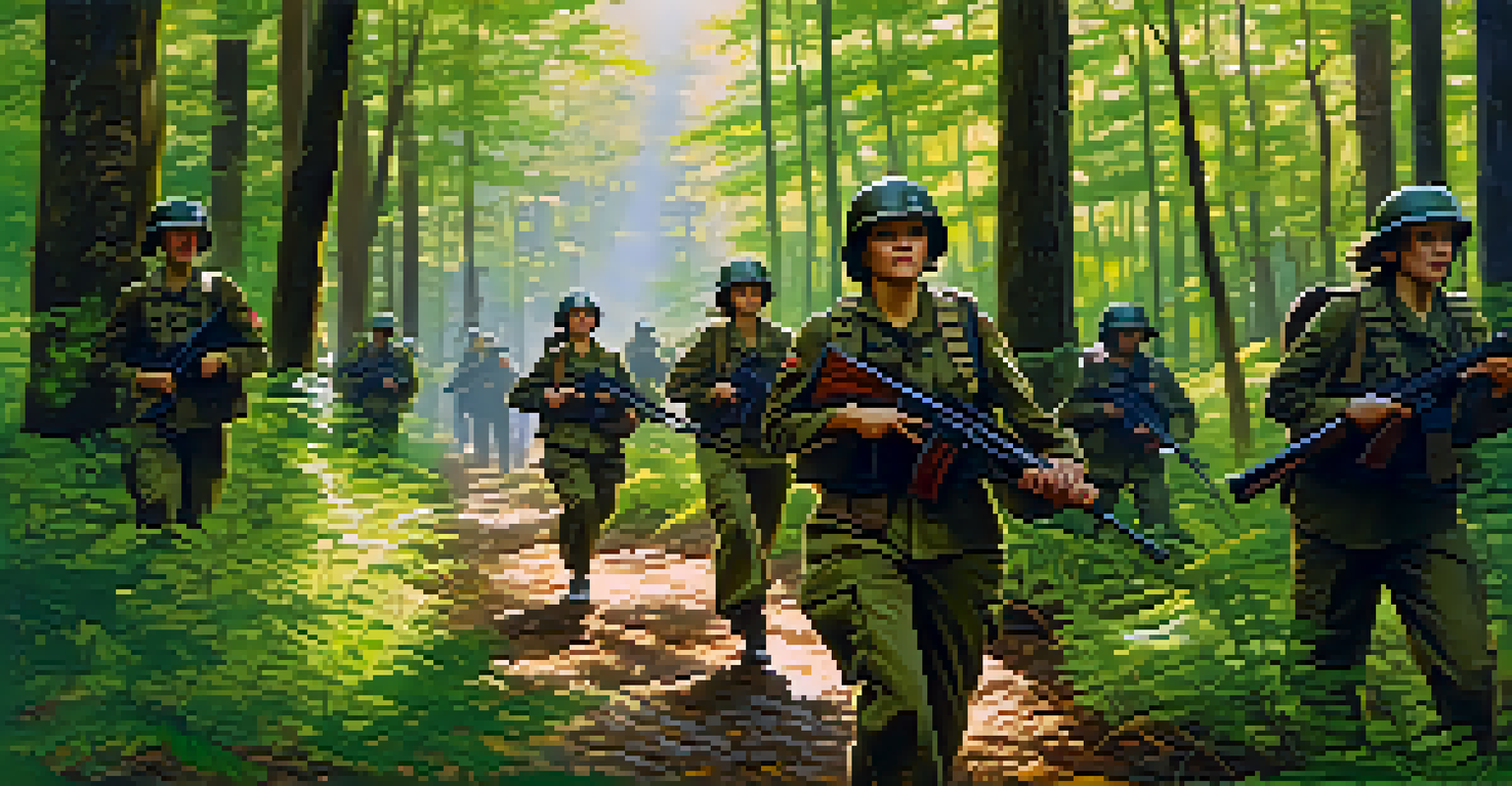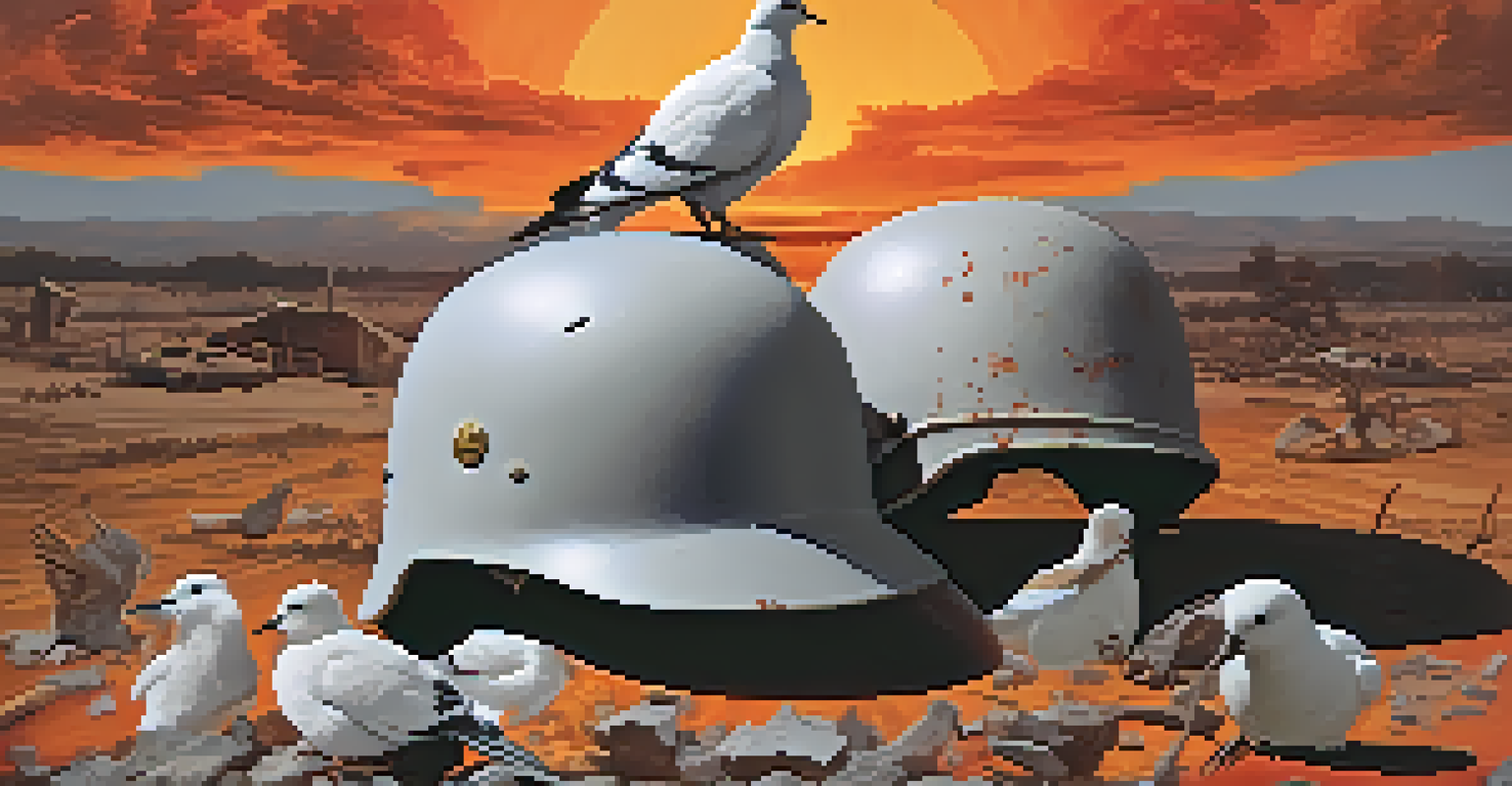The Impact of War Films: Analyzing Their Evolution and Themes

The Historical Context of War Films
War films have long reflected the socio-political climate of their times. From early silent films depicting World War I to the more complex narratives of modern conflicts, these films serve as a mirror to societal attitudes towards war. They often highlight the heroism and sacrifice of soldiers while also shedding light on the horrors of battle, allowing audiences to engage with history on an emotional level.
War is hell, but that doesn't mean we shouldn't try to explain it.
For instance, movies like 'All Quiet on the Western Front' not only portray the brutality of trench warfare but also convey the disillusionment felt by soldiers. As wars evolve, so too do the stories told through film, illustrating changing perspectives on conflict and its consequences. This historical context enriches the viewer's understanding of the societal impact of these narratives.
Moreover, the evolution of technology has allowed filmmakers to depict war with increasing realism. Today's war films often utilize advanced visual effects and sound design to immerse audiences fully in the experience, making the emotional impact even more profound. As a result, war films continue to shape and reflect public perception of military conflicts.
Themes of Heroism and Sacrifice in War Films
One of the most prevalent themes in war films is heroism, which often manifests in the form of self-sacrifice. Characters are frequently depicted as brave soldiers who prioritize their comrades and country above their own safety. This portrayal not only honors the sacrifices made by real-life soldiers but also instills a sense of national pride and unity among viewers.

Movies like 'Saving Private Ryan' exemplify this theme, showcasing the harrowing experiences of soldiers while highlighting their courage and resilience. These narratives create a powerful emotional connection with the audience, prompting reflections on bravery and the human spirit in the face of adversity. Such themes resonate deeply, fostering appreciation for those who serve in the military.
War Films Reflect Societal Attitudes
War films serve as a mirror to societal views, evolving to capture the complexities of conflict and public sentiment.
However, as war films evolve, there is a growing emphasis on the psychological toll of warfare on soldiers. More recent films, such as 'American Sniper' and 'The Hurt Locker,' delve into the mental health struggles faced by veterans, challenging the traditional narrative of heroism. This shift encourages viewers to confront the complexities of war and its lasting effects on individuals and families.
The Role of Anti-War Sentiments in Film
While many war films glorify combat, others take a starkly anti-war stance, emphasizing the futility and devastation of conflict. These films often aim to critique the romanticized notions of warfare, offering a more realistic portrayal of its consequences. By highlighting the chaos and destruction wrought by war, they encourage audiences to question the very nature of conflict.
The film is a reflection of our times, a mirror held up to society's values and beliefs.
Classic examples include 'Apocalypse Now' and 'Platoon,' both of which depict the psychological turmoil and ethical dilemmas faced by soldiers. These films challenge the viewer to consider the moral implications of war and the long-lasting scars it leaves on individuals and society. Such narratives serve as powerful reminders of the cost of conflict, urging audiences to reflect on historical and current military engagements.
Moreover, the rise of anti-war films has coincided with significant global conflicts, illustrating a societal pushback against war. As filmmakers respond to current events, these narratives resonate with audiences seeking to understand the complexities of modern warfare. Through their art, they provide a platform for critical discourse on the morality of war.
The Evolution of Gender Roles in War Films
Historically, war films have often centered around male protagonists, reinforcing traditional gender roles. However, the portrayal of women in war films has evolved significantly over the decades. More recent films showcase female characters as active participants in military conflicts, both on the front lines and behind the scenes, challenging the notion that war is solely a male domain.
Movies such as 'Zero Dark Thirty' and 'Wonder Woman' highlight the diverse roles women have played in warfare, whether as soldiers, strategists, or leaders. This evolution not only reflects changing societal attitudes towards gender equality but also provides a more comprehensive narrative of war. By including women's stories, filmmakers enrich the historical context and broaden the audience's understanding of conflict.
Heroism vs. Psychological Impact
While traditional war films often celebrate heroism, recent narratives increasingly focus on the psychological toll of warfare on soldiers.
Additionally, the exploration of female soldiers' experiences offers new perspectives on the emotional and psychological impact of war. These narratives often delve into themes of resilience, camaraderie, and the challenges faced by women in a traditionally male-dominated sphere. As such, they contribute to a more nuanced understanding of the multifaceted nature of war.
The Influence of Technology on War Film Production
The advent of new technologies has transformed the way war films are made, allowing for more immersive and realistic storytelling. From CGI effects to sophisticated sound design, filmmakers can create visually stunning representations of battle that resonate with audiences. This technological evolution has not only enhanced the visual experience but also deepened the emotional impact of war narratives.
For example, films like 'Dunkirk' employ innovative techniques such as non-linear storytelling and practical effects to create tension and urgency. These advancements allow viewers to feel as if they are part of the action, fostering a greater connection with the characters and their struggles. As technology continues to advance, the possibilities for war film production are virtually limitless.
Moreover, the rise of streaming platforms has changed the landscape of war films, providing greater accessibility for audiences worldwide. With a plethora of options available, filmmakers have the opportunity to reach diverse audiences, allowing for a wider variety of stories to be told. This democratization of content can lead to a richer exploration of different perspectives on war and conflict.
Cultural Reflections and Social Commentary in War Films
War films often serve as a lens through which society can examine its values and beliefs. They reflect contemporary issues, such as nationalism, morality, and the ethics of war, prompting audiences to engage in critical discussions. By portraying the complexities of conflict, these films challenge viewers to confront their own perspectives on military engagements.
For instance, films like 'Full Metal Jacket' and 'Black Hawk Down' not only depict the realities of war but also critique military policies and government decisions. This commentary encourages audiences to think critically about the implications of warfare, stimulating dialogues that extend beyond the theater. In doing so, these films play a vital role in shaping public opinion and understanding of military matters.
Diverse Perspectives in War Narratives
The representation of women and marginalized groups in war films enriches storytelling and broadens the understanding of conflict.
Additionally, war films can highlight the experiences of marginalized groups, shedding light on the diverse narratives often overlooked in mainstream media. By giving voice to these stories, filmmakers contribute to a more inclusive understanding of history. This cultural reflection enriches the viewer's experience and fosters empathy for those affected by war.
Future Trends in War Films: What Lies Ahead?
As the landscape of cinema continues to evolve, so too will the themes and narratives explored in war films. With advancements in technology and shifts in societal attitudes, filmmakers are poised to tell new and diverse stories that reflect contemporary conflicts. This evolution may lead to more nuanced representations of war that challenge traditional narratives and explore the human experience more deeply.
Moreover, the rise of global cinema suggests that international perspectives on war will become increasingly prominent. Filmmakers from various cultural backgrounds will bring their unique experiences and viewpoints to the forefront, enriching the genre with diverse narratives. This globalization of storytelling can foster greater understanding and empathy among audiences worldwide.

Ultimately, the future of war films lies in their ability to adapt and respond to changing societal contexts. By continuing to push boundaries and explore complex themes, filmmakers can ensure that war films remain relevant and impactful. As they navigate this evolving landscape, they will undoubtedly contribute to an ongoing dialogue about the nature of conflict and its implications for humanity.